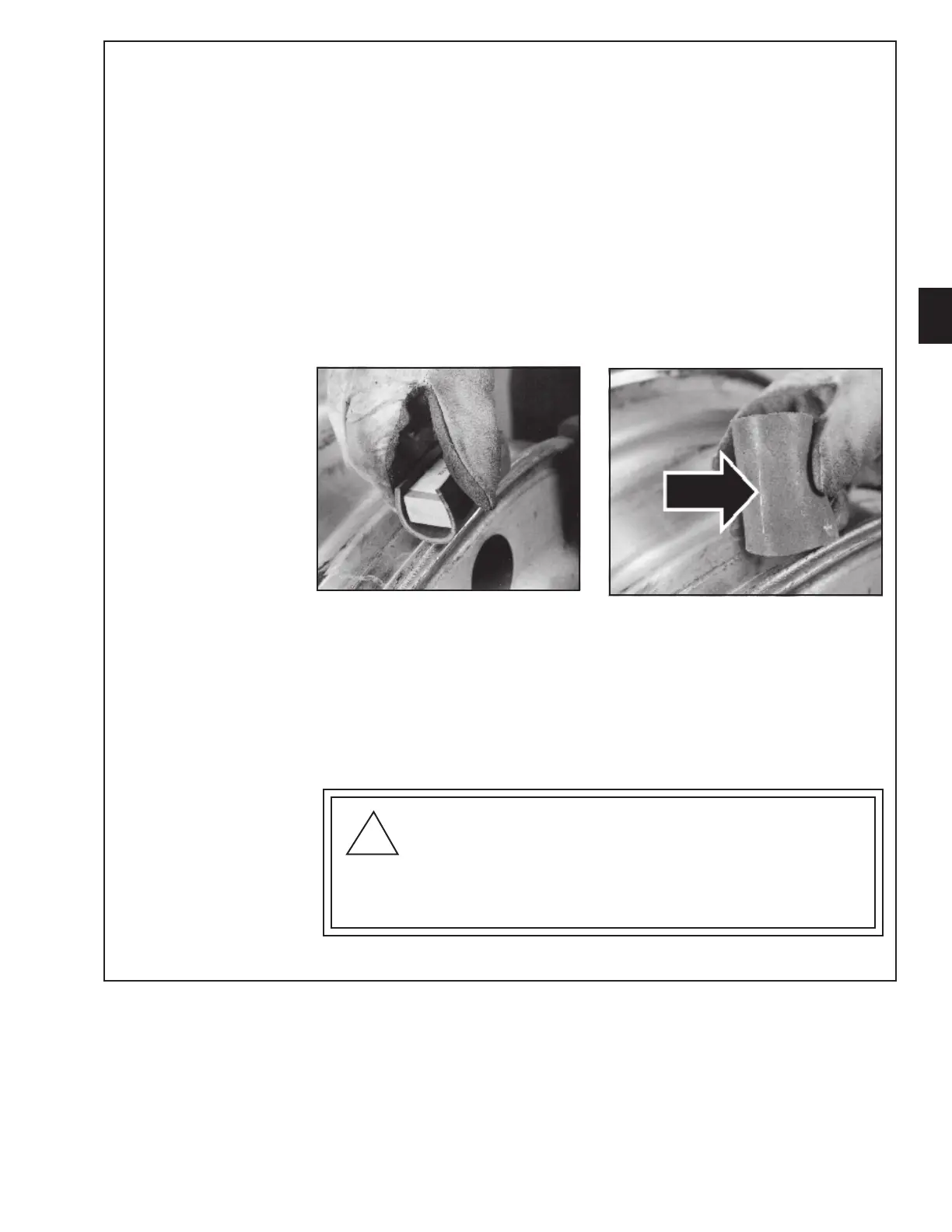15
3
Rim flange
wear (continued)
STEP 2. After the wheel is separated from the tire, verify the circumference of the bead seat
on the open side is acceptable (see Section 3-4). Check the wheel flange with the Alcoa Rim
Flange Wear Gauge to determine if the wheels must be removed from service for excessive
rim flange wear (photo 1 on previous page).
See Rim Flange Wear Gauge Instructions on the illustrations on previous page to make this
determination. If you do not have an Alcoa Rim Flange Wear Gauge, contact Alcoa Wheel
Products to obtain a gauge(s) at no charge by calling (800) 242-9898 or on the web at www.
alcoawheels.com.
STEP 3. If the wheel is deemed to be serviceable by the rim flange gauge, examine the wheel
flange edge for sharpness by using a rubber sharpness gauge. These gauges are constructed by
having a section of tire side wall or a suitable piece of rubber attached to a block of wood
(photo 2). By running the sharpness indicator gauge along the wheel in the area of the wear,
determine if the wear is sharp enough to cut or damage the rubber on the sharpness indicator
(photo 3). If the rubber is cut, then follow the edge removal instructions below.
If the flange cuts or appears close to being sharp enough to cut the rubber on the sharpness
indicator gauge, the edge can be removed per the edge removal procedures below. If the rub-
ber is not cut, then the wheel can be returned to service without further work for rim flange
wear.
Photo 2. A rubber sharpness gauge or a suitable
piece of rubber attached to a block of wood.
Photo 3. Run the sharpness indicator gauge along
the wheel in the area of the wear to determine if
the wear is sharp enough to cut or damage the
rubber on the sharpness indicator.
NOTICE: Examine the tire for cuts
in the bead area and side wall.
If no damage occurred to these
areas, return the tire to service.
Cut tires should be removed
from service. The tire should be
inspected at this time
for any other damage and
be treated per normal tire
procedures recommended by
the tire manufacturer.
NOTICE: Check the wheel
at every tire change or ONCE PER
YEAR for rim flange wear and
any sharp edges. If you follow
this practice, you will significantly
reduce the possibility of a rim
flange cutting into the tire.
CAUTION Do not run unprotected hands or fingers across worn rim flange areas of used
wheels.
Worn rim flange areas are sharp and can cut hands or fingers. Cuts can lead to infection.
Always wear gloves when handling used wheels or when testing for edge sharpness.
CAUTION
!
